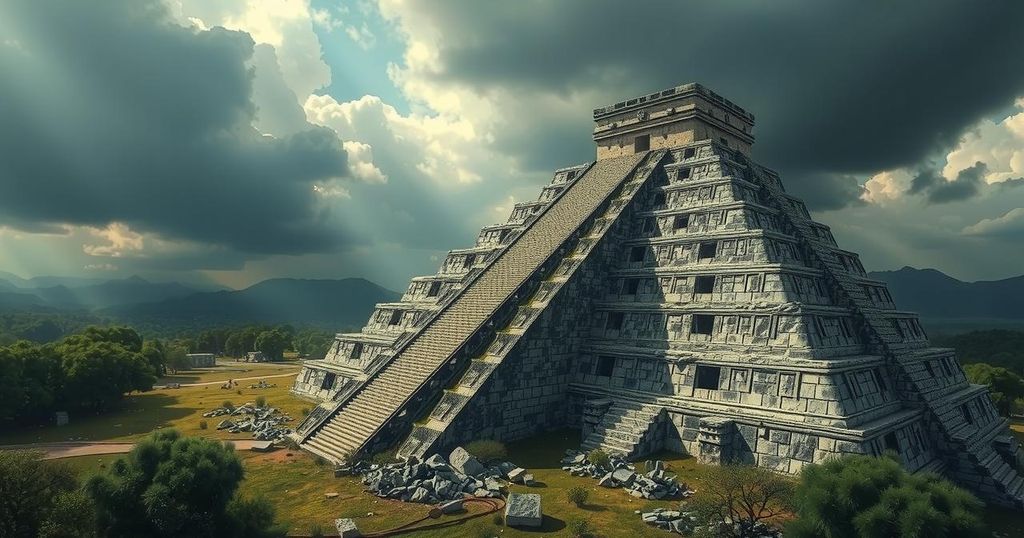Collapse of Historic Pyramid in Mexico Signals Climate Change Threat to Heritage Sites
In July 2024, a 15-meter-high stone pyramid in Michoacán, Mexico, collapsed due to extreme weather, particularly incessant rain after a prolonged drought. This site, rich in history as part of the Michoacán Kingdom, faces ongoing risks from climate change, prompting urgent calls for restoration efforts to protect invaluable cultural heritage.
In a striking manifestation of climate change’s impact on cultural heritage, a 15-meter-high pyramid in Michoacán, Mexico, collapsed following a night of relentless rain on July 29, 2024. This significant archaeological site, which had stood as a testament to the Michoacán Kingdom’s history, has faced structural decline as extreme precipitation exacerbated pre-existing vulnerabilities. Experts from Mexico’s National Institute of Anthropology and History (INAH) revealed that ongoing severe weather conditions had compromised other structures within the site, emphasizing the urgent need for restoration and preservation efforts for Mexico’s indigenous heritage. The collapse serves as a grave reminder of the ongoing threat to historical sites posed by environmental changes, an issue increasingly recognized by archaeologists around the globe.
The deterioration of ancient structures due to climate change presents a growing concern for cultural heritage preservation worldwide. The Ihuatzio archaeological site, known for its well-preserved pyramids, holds significance as the former headquarters of the P’urhépechas, who resisted Aztec conquest. Recent extreme weather patterns, characterized by severe drought followed by intense rainfall, have resulted in structural failures in such sites, urging experts to address their vulnerability. As adverse climatic events accelerate, the historical narratives encapsulated within these monuments may face irrevocable loss, necessitating immediate action to safeguard them for future generations.
The recent collapse of the pyramid in Michoacán underscores the critical intersection of climate change and cultural heritage preservation. This incident not only highlights the fragility of ancient structures but also serves as a call to action for restoration efforts amid worsening environmental conditions. The ongoing threat posed by extreme weather to heritage sites illuminates a pressing need for increased awareness and proactive measures in the preservation of cultural legacies.
Original Source: www.sciencealert.com




Post Comment